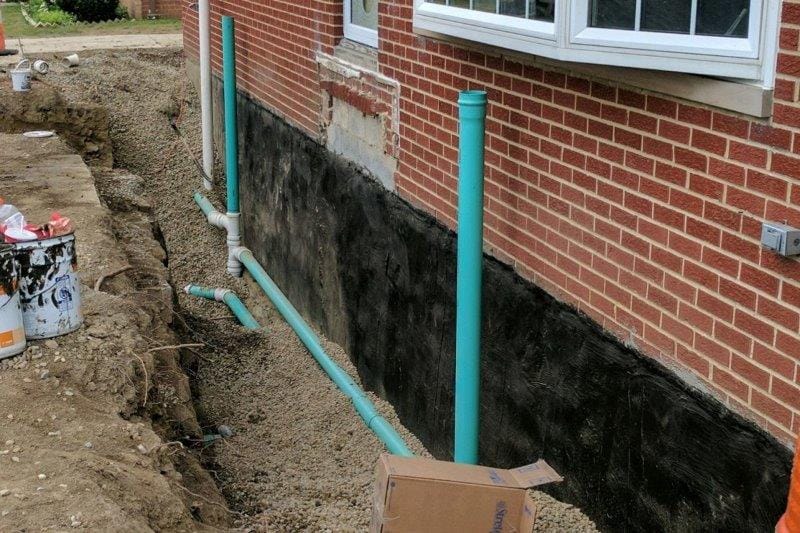The Ultimate Guide To Best Basement Waterproofing
Table of ContentsGetting The Best Basement Waterproofing To WorkAll about Best Basement WaterproofingThe 9-Minute Rule for Best Basement WaterproofingBest Basement Waterproofing Can Be Fun For EveryoneNot known Facts About Best Basement Waterproofing
AdvantaClean's qualified experts and service technicians will certainly find the water source. If wall surface or slab splits are existing, we will infuse polyurethane and epoxies right into the fractures and secure the concession, protecting against additional moisture from entering.If there's condensation on the exterior of the foil, you have high moisture in your cellar. If the foil has condensation on the inside surface area (next to the wall), the dirt around your house may be normally damp from a high water table or bad dirt water drainage.
You can waterproof just your interior wall surfaces, which may address the problem. Once they dry out, they stick completely to concrete and masonry wall surfaces.
The smart Trick of Best Basement Waterproofing That Nobody is Discussing
Concrete water-proof finishings can't be applied to previously repainted surfaces; inspect the label. Understood as densifiers, they are appropriate only for wall surfaces that haven't been repainted or sealed.
You comb, roll, or spray it on much even more thickly one gallon covers simply 75 square feet, not the 300 square feet typical with common paint. Waterproof paint is fine for DIY application. You can use it over repainted surfaces, and paint over it once it's cured (one gallon prices $37).
It can set you back $10,000 to $15,000, depending on the job needed. Exterior waterproofing involves excavating all around the house to the complete depth of the foundation wall surfaces, after that installing a water-proof finish or membrane layer topped by drain panels.
A basement without waterproofing is kind of like that. Your cellar does not desire to go via a downpour without correct security simply as much as you don't desire to.
Best Basement Waterproofing for Dummies
However if you have actually done your research, you 'd recognize there are two types of waterproofing: exterior and interior. It can obtain perplexing what they both mean, which one's a better investment, and what will actually keep the water out. Don't worry, we assembled this blog site to quickly define both techniques for you and discuss the benefits and drawbacks of each.
Outside waterproofing is a waterproofing approach that entails securing your home from the outside. It's sort of like a moat around a castle. It includes digging a trench around your whole house to the structure (regarding 8 to 10 feet down). The structure walls are then cleansed, sealed, and covered with a waterproof membrane or sealant.

The 5-Minute Rule for Best Basement Waterproofing
It's a much more involved procedure that needs excavating up your lawn, which is costly and time-consuming. Outside waterproofing includes removing everything surrounding the house, consisting of verandas, driveways, pathways, landscaping, air conditioner units, decks, and more. If any one of the job was done incorrectly and water is still entering your cellar, there isn't much you can do to deal with or repair it.
Inside cellar waterproofing entails waterproofing from the within. Any water that leakages right into your basement is redirected before it touches your floor. It's type of like putting on a raincoat under your garments. It entails two points: a water drainage track and a sump pump. It functions by sealing the within your basement walls and floors so water that tries to get in is transported out through a sump pump.
It's an effective approach to waterproof your basement. The downside of indoor cellar waterproofing primarily has to do with the installment procedure.
Some Ideas on Best Basement Waterproofing You Should Know
In final thought, exterior and indoor cellar waterproofing are both reliable methods of protecting your home from water damage. Outside waterproofing produces an obstacle that prevents water from entering your home, while indoor waterproofing useful reference redirects water that does enter your home. And it's vital to keep in mind that exterior waterproofing is an expensive and disruptive setup procedure when contrasted to indoor waterproofing.
Whichever approach you choose, make sure you select a trustworthy and credible professional for the task. Both methods need knowledgeable workers to take care of the task. If you have any type of inquiries regarding basement waterproofing, please connect to us. And if you're in our solution area and have water in your basement, contact us for a free, no-obligation home inspection.
You can complete our type below, begin a conversation in the bottom right-hand edge, or call us at view website 1-800-827-0702.